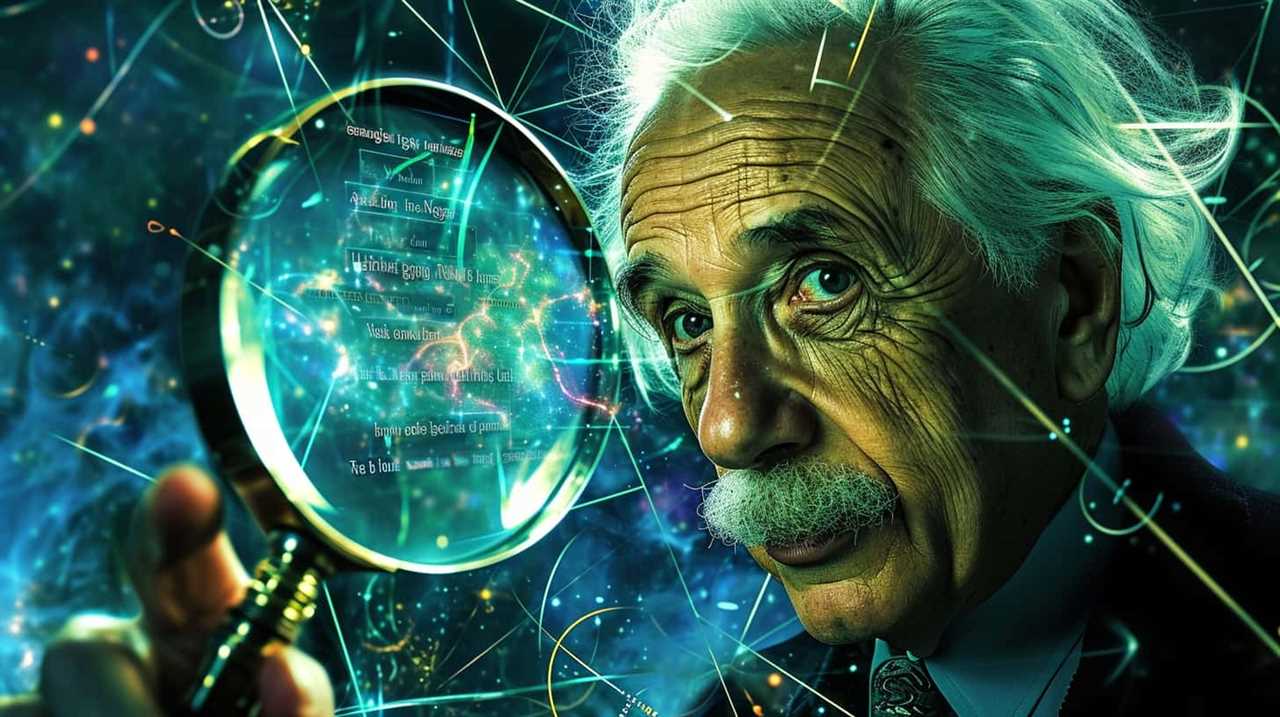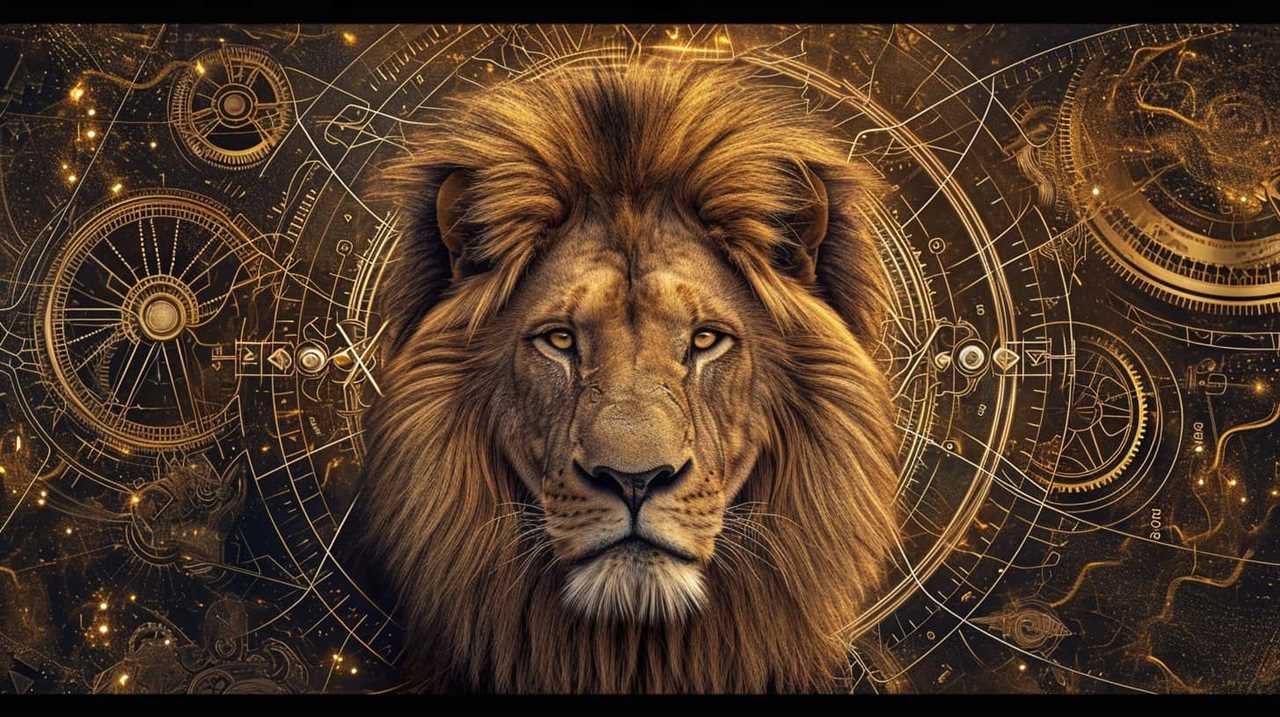Famous Personalities
Peter Drucker Quotes – Famous Austrian-American Business Author

As authors, we frequently draw inspiration from the wisdom of those who have excelled in their respective domains. Peter Drucker, an esteemed Austrian-American author specializing in business, is one such figure whose insightful quotations serve as foundational advice for entrepreneurs and leaders across the globe.
With his profound insights and practical advice, Drucker offers valuable lessons on the importance of effective leadership, management strategies, building a successful business culture, and the power of innovation and adaptability. His emphasis on customer focus, continuous learning, and setting clear goals and objectives resonates with professionals seeking to excel in their respective industries.
Moreover, Drucker's teachings on ethical leadership and social responsibility serve as a reminder of the profound impact that business decisions can have on society as a whole. Through his reflections on success and failure, Drucker's quotes provide a roadmap for personal and professional growth.
Key Takeaways
- Effective communication is essential for strong leadership and management.
- Building a successful business culture requires effective leadership and employee engagement.
- Ethical leadership and social responsibility are crucial for making business decisions that have a positive impact on society.
- Innovation and adaptability are key to staying competitive and driving growth in a rapidly changing business landscape.
The Importance of Leadership
Leadership plays a vital role in shaping the success and direction of any organization. The importance of communication and the qualities of a good leader can't be overstated. Effective communication is the foundation of strong leadership, as it allows leaders to clearly convey their vision, goals, and expectations to their team members. It fosters understanding, collaboration, and trust among team members, creating a positive and productive work environment.
A good leader possesses several key qualities that contribute to their effectiveness. Firstly, they've a clear vision and are able to articulate it to their team in a compelling manner. They inspire and motivate others to work towards common goals.
Secondly, a good leader is an excellent listener. They value the opinions and ideas of their team members, actively seek their input, and create an environment where everyone feels heard and valued.
Thirdly, a good leader leads by example. They demonstrate integrity, honesty, and transparency in their actions, earning the respect and trust of their team.
Effective Management Strategies

Effective management strategies are crucial for achieving organizational success.
Two key areas to focus on are decision-making techniques and team collaboration methods.
By implementing effective decision-making techniques, such as analyzing data and consulting with relevant stakeholders, managers can make informed choices that drive the organization forward.
Additionally, fostering a culture of collaboration and implementing strategies that encourage teamwork can improve communication, increase productivity, and enhance overall performance.
Decision-Making Techniques
In the realm of effective management strategies, decision-making techniques play a vital role in guiding organizations towards success. When faced with making decisions, it is crucial for managers to employ effective decision-making strategies and problem-solving techniques. Peter Drucker, a renowned Austrian-American business author, emphasized the importance of decision-making in achieving organizational goals. To help organizations make informed decisions, Drucker proposed several techniques that can be used as a framework for effective decision-making. One such technique is the decision matrix, which involves evaluating options based on criteria such as cost, feasibility, and impact. Another technique is the SWOT analysis, which helps in identifying an organization's strengths, weaknesses, opportunities, and threats. By utilizing these decision-making techniques, managers can make well-informed choices that lead to positive outcomes for their organizations.
| Decision Matrix | SWOT Analysis |
|---|---|
| Evaluate options based on criteria | Identify strengths, weaknesses, opportunities, and threats |
| Cost, feasibility, and impact | Internal and external factors |
| Helps in decision-making process | Provides a comprehensive understanding of the organization |
Team Collaboration Methods
Collaboration among team members is a critical aspect of effective management strategies. Team building plays a vital role in fostering collaboration within a team. It involves creating opportunities for team members to connect, build trust, and develop shared goals and values.
By engaging in team building activities, such as team-building exercises or retreats, team members can enhance their communication skills, strengthen their relationships, and improve their ability to work together towards a common objective.
Conflict resolution is another important aspect of team collaboration. When conflicts arise, it's crucial for team members to address them promptly and constructively. Effective conflict resolution methods, such as active listening, open communication, and compromise, can help teams overcome differences and find mutually beneficial solutions.
Building a Successful Business Culture
When it comes to building a successful business culture, there are several key points to consider.
First, cultural values play a crucial role in shaping the identity and behavior of an organization.
Second, effective leadership is essential in driving and cultivating the desired culture.
Lastly, fostering employee engagement is vital in creating a positive and productive work environment.
Cultural Values in Business
To build a successful business culture, it's essential to prioritize and uphold cultural values that align with the organization's mission and vision.
Cultural diversity is a key component of a thriving business culture. By embracing different perspectives, backgrounds, and experiences, organizations can foster innovation, creativity, and adaptability.
Cross-cultural communication is another crucial element to consider. Effective communication across cultures helps to bridge gaps and build strong relationships, which in turn leads to better collaboration and productivity. It allows teams to understand and appreciate different cultural norms, values, and communication styles.
Leadership and Culture
Building a successful business culture requires effective leadership that prioritizes and upholds cultural values aligned with the organization's mission and vision. Leaders play a crucial role in shaping the organizational culture and creating an environment that fosters productivity, collaboration, and innovation. To achieve this, leaders must employ various leadership strategies that promote a positive and inclusive culture. These strategies may include setting clear expectations, encouraging open communication, and leading by example. By embodying the desired values and behaviors, leaders can create a culture that inspires employees to perform at their best and fosters a sense of belonging and purpose. Additionally, leaders must continuously assess and adapt the organizational culture to meet the evolving needs of the business and its employees. By investing in the development of a strong and healthy culture, leaders can lay the foundation for long-term success.
| Leadership Strategies | Organizational Culture |
|---|---|
| Set clear expectations | Foster a positive and inclusive environment |
| Encourage open communication | Promote collaboration and innovation |
| Lead by example | Inspire employees to perform at their best |
| Continuously assess and adapt | Create a sense of belonging and purpose |
Fostering Employee Engagement
Fostering employee engagement is essential for creating a successful business culture that drives productivity and long-term success. When employees are motivated and satisfied in the workplace, they're more likely to be engaged and committed to their work. This leads to higher levels of productivity, increased innovation, and improved overall performance.
To evoke an emotional response in the audience, consider the following:
- Recognize and appreciate employees' efforts and contributions, showing them that their work is valued and important.
- Provide opportunities for growth and development, allowing employees to enhance their skills and reach their full potential.
Innovation and Adaptability

In order to thrive in today's rapidly changing world, organizations must embrace a culture of constant innovation and adaptability. Innovation strategies are essential for staying ahead of the competition and meeting the ever-evolving needs of customers. Peter Drucker, a renowned business author, emphasized the importance of innovation in his work. He believed that organizations should constantly seek new ideas and approaches to drive growth and success.
Adaptability in business is equally crucial. As the business landscape continues to evolve, organizations must be able to quickly adjust their strategies, processes, and structures to stay relevant. Drucker emphasized that organizations should be willing to change and adapt to external factors, such as technological advancements, market trends, and customer preferences.
To foster a culture of innovation and adaptability, organizations can encourage employees to think creatively, experiment with new ideas, and embrace change. They can also invest in research and development, collaborate with external partners, and continuously learn from their successes and failures.
The Role of Customer Focus

Customer focus plays a pivotal role in driving organizational success and growth. It's the foundation upon which businesses build their relationships with customers and strive to meet their needs and expectations. By prioritizing customer satisfaction and loyalty, companies can gain a competitive edge and foster long-term relationships with their customers.
Here are two ways in which customer focus can evoke an emotional response in the audience:
- Enhanced customer satisfaction: When businesses focus on understanding and addressing the unique needs and preferences of their customers, it creates a sense of validation and appreciation. Customers feel valued and understood, leading to increased satisfaction and a deeper emotional connection with the brand.
- Building customer loyalty: By consistently delivering exceptional customer experiences and exceeding expectations, organizations can cultivate customer loyalty. When customers feel a strong sense of loyalty towards a brand, it evokes emotions such as trust, confidence, and a desire to continue supporting the business. This emotional connection fosters long-term customer relationships and drives repeat purchases.
Maximizing Efficiency and Effectiveness

To maximize the efficiency and effectiveness of an organization, it's essential to streamline processes and optimize resource allocation. This requires a strong focus on leadership development and productivity improvement.
Effective leaders understand the importance of continuously improving processes to eliminate waste and unnecessary steps. By identifying bottlenecks and inefficiencies, leaders can make informed decisions to restructure workflows and allocate resources more effectively. This not only improves overall productivity but also enhances the organization's ability to meet its goals and objectives.
Leadership development plays a crucial role in maximizing efficiency and effectiveness. It empowers individuals to become effective leaders who can inspire and motivate their teams towards achieving organizational goals. Through leadership development programs, individuals can enhance their skills in decision-making, problem-solving, and communication, enabling them to lead teams more effectively. This, in turn, creates a culture of continuous improvement and innovation, driving the organization towards higher levels of efficiency and effectiveness.
Productivity improvement is another key aspect of maximizing efficiency and effectiveness. By implementing strategies such as automation, technology adoption, and performance measurement, organizations can optimize their processes and increase productivity. This involves identifying and eliminating non-value-added activities, standardizing processes, and leveraging technology to streamline workflows.
Developing High-Performing Teams

When it comes to achieving success, teamwork is essential.
Building strong collaborations and fostering effective team communication are key factors in developing high-performing teams.
Teamwork for Success
Developing high-performing teams is crucial for achieving success through effective collaboration and synergy. To build strong teams, it's important to implement proven team-building and collaboration techniques. Here are two key strategies that can evoke a powerful emotional response in your audience:
- Foster a culture of trust and psychological safety:
- Encourage open communication and active listening.
- Create an environment where team members feel comfortable expressing their ideas and challenging each other constructively.
- Promote diversity and inclusion:
- Embrace different perspectives, backgrounds, and skills within your team.
- Encourage collaboration and learning from one another's unique experiences.
Building Strong Collaborations
Building strong collaborations is essential for developing high-performing teams that can achieve success through effective collaboration and synergy.
Cross-functional collaboration is a key component of building strong collaborations, as it brings together individuals from different departments or areas of expertise to work towards a common goal. By leveraging the diverse skills and perspectives of team members, cross-functional collaboration can lead to innovative solutions and improved decision-making.
However, building trust is crucial for successful collaboration. Trust allows team members to feel safe sharing ideas, taking risks, and challenging each other's thinking. It creates an environment where everyone feels valued and supported, leading to increased engagement and productivity.
To build trust, it's important to foster open communication, encourage collaboration, and demonstrate integrity and transparency.
Effective Team Communication
To develop high-performing teams, effective team communication plays a pivotal role in fostering collaboration and achieving success. It's essential for leaders to understand the importance of effective communication strategies in leadership development.
Here are two key strategies to enhance team communication:
- Active Listening: Actively listening to team members fosters trust and understanding. It involves giving undivided attention, asking clarifying questions, and acknowledging their perspectives. This creates an environment where team members feel valued and encourages open dialogue.
- Clear and Concise Communication: Clear and concise communication ensures that messages are easily understood and minimizes the risk of misunderstandings. Leaders should provide clear instructions, use simple language, and avoid jargon. This promotes effective collaboration and prevents miscommunication.
Embracing Change and Uncertainty

Change and uncertainty can be daunting, but Peter Drucker reminds us that embracing them is vital for personal and professional growth. In a rapidly evolving world, where the only constant is change, it's important to adapt and remain open to new possibilities. Embracing change means being willing to step out of our comfort zones and explore uncharted territories. It requires a mindset that sees change as an opportunity rather than a threat.
Uncertainty, on the other hand, is the companion of change. It's the feeling of not knowing what lies ahead, of facing ambiguity and unpredictability. Embracing uncertainty means accepting that we can't control every outcome and being comfortable with the unknown. It requires trust in our abilities to navigate through challenges and make decisions in the face of limited information.
The Power of Continuous Learning

Continuous learning is a powerful tool that enables individuals and organizations to adapt, grow, and thrive in an ever-changing world. It offers numerous benefits and advantages, making it a crucial aspect of lifelong learning.
Here are two reasons why continuous learning is so valuable:
- Personal Development: Continuous learning allows individuals to expand their knowledge, skills, and abilities. It provides opportunities for personal growth, helping individuals stay relevant and competent in their fields. By continuously learning, individuals can enhance their problem-solving abilities, critical thinking skills, and creativity, enabling them to excel in their careers and achieve their goals.
- Organizational Success: Continuous learning isn't only beneficial for individuals but also for organizations. It fosters a culture of innovation and adaptability within an organization, enabling it to stay ahead of the competition. Organizations that embrace continuous learning are better equipped to navigate change, identify new opportunities, and make informed decisions. Additionally, continuous learning encourages collaboration and knowledge-sharing among employees, leading to improved teamwork and overall organizational success.
Setting Clear Goals and Objectives

Setting clear goals and objectives is essential for individuals and organizations to effectively plan, prioritize, and measure their progress towards success. Peter Drucker, a renowned business author, emphasized the importance of clear goal setting and effective objectives in achieving desired outcomes. By clearly defining what needs to be accomplished, individuals and organizations can align their efforts, make informed decisions, and track their progress.
To illustrate the significance of clear goal setting and effective objectives, let's consider the following table:
| Goal | Objective | Key Result |
|---|---|---|
| Increase sales revenue | Launch a new marketing campaign | Achieve a 10% increase in sales within six months |
| Improve customer satisfaction | Enhance customer service training | Achieve a 20% increase in customer satisfaction ratings within one year |
| Enhance employee productivity | Implement time management tools | Increase average employee productivity by 15% within three months |
| Expand market share | Enter new international markets | Achieve a 5% increase in market share in target countries within two years |
| Reduce operational costs | Optimize supply chain processes | Achieve a 10% decrease in procurement costs within six months |
Through this table, it becomes evident that clear goals and objectives provide a roadmap for success. They guide decision-making, enable effective resource allocation, and facilitate monitoring and evaluation. By setting clear goals and defining measurable objectives, individuals and organizations can stay focused, motivated, and on track towards achieving their desired outcomes.
Ethical Leadership and Social Responsibility

After understanding the importance of clear goal setting and effective objectives, we can now explore the crucial aspects of ethical leadership and social responsibility.
Ethical decision making is a fundamental component of effective leadership. It involves making choices that are morally right, even when faced with difficult situations or conflicting interests. Leaders who prioritize ethical decision making demonstrate integrity, build trust, and inspire loyalty among their team members.
Corporate social responsibility (CSR) is another essential aspect of ethical leadership. It involves taking responsibility for the impact of one's actions on society and the environment. Leaders who embrace CSR strive to make a positive difference in the communities they operate in, beyond just maximizing profits. They prioritize sustainable practices, promote diversity and inclusion, and give back to society through philanthropy and volunteerism.
Incorporating ethical decision making and CSR into leadership practices not only benefits the organization but also contributes to the greater good. It fosters a culture of integrity, accountability, and social consciousness. As leaders, we've the power to shape the future and influence the world around us.
Reflections on Success and Failure

Reflecting on both success and failure provides valuable insights and opportunities for growth and improvement. When we take the time to analyze our successes, we can identify the strategies and actions that led to positive outcomes. This allows us to replicate those behaviors and increase our chances of future success.
Additionally, reflecting on our failures helps us understand what went wrong and why. It allows us to identify our mistakes and learn from them, ultimately leading to personal and professional growth.
One key reflection on success is the importance of resilience. Successful individuals often face numerous obstacles and setbacks along their journey. It's their ability to bounce back from failure, learn from their mistakes, and keep going that sets them apart. By reflecting on their own resilience, individuals can strengthen their ability to overcome challenges and achieve their goals.
Learning from mistakes is another fundamental aspect of reflecting on failure. Mistakes are inevitable, but what matters is how we respond and learn from them. By analyzing our failures, we can uncover valuable lessons that can guide us in making better decisions in the future. This reflective process allows us to continually improve and avoid repeating the same mistakes.
Frequently Asked Questions
How Did Peter Drucker's Upbringing in Austria Influence His Business Philosophies?
Peter Drucker's upbringing in Austria had a significant impact on his business philosophies. His exposure to the cultural and historical context of Austria shaped his thinking and approach to management.
Growing up in a country with a rich intellectual tradition and a strong emphasis on education, Drucker developed a deep appreciation for knowledge and learning. This influence can be seen in his belief in the importance of innovation, adaptability, and continuous improvement, which became central tenets of his management philosophy.
What Were Some of Peter Drucker's Most Notable Contributions to the Field of Management?
Peter Drucker made significant contributions to the field of management. His impact on management can be seen through his innovative ideas and principles. He emphasized the importance of decentralization, knowledge workers, and the need for managers to be effective leaders.
Drucker's management principles focused on the idea of continuous improvement, strategic thinking, and the importance of adapting to change. His insights and teachings continue to shape the way we approach and understand management today.
Can You Provide Examples of Companies That Successfully Implemented Peter Drucker's Principles?
Examples of companies successfully implementing Peter Drucker's principles include General Electric, IBM, and Procter & Gamble.
Drucker's emphasis on innovation, customer-centricity, and effective management practices has had a profound impact on these organizations. His upbringing in Austria, where he witnessed the collapse of traditional institutions, shaped his philosophies on the importance of adaptability and continuous learning in business.
These companies have embraced Drucker's ideas, leading to their sustained success and growth in the ever-changing business landscape.
How Did Peter Drucker Define the Role of a Leader in an Organization?
When defining the role of a leader in an organization, Peter Drucker emphasized the importance of leadership qualities. He believed that a leader should possess strong communication skills, strategic thinking abilities, and the capacity to inspire and motivate their team.
Drucker also recognized the crucial role of a leader in setting goals, making decisions, and fostering a culture of innovation within the organization.
What Were Some of Peter Drucker's Views on the Future of Business and Management?
When considering the future of business and management, it's important to explore Peter Drucker's views.
Drucker believed that leaders should anticipate and adapt to emerging trends, emphasizing the need for continuous learning and innovation.
He recognized the significant impact of technology on management, stating that it would transform the way businesses operate.
Drucker's insights serve as a guide for organizations seeking to navigate the ever-evolving landscape of business and stay ahead in an increasingly digital and interconnected world.
What Similarities Can We Find in the Business Approaches of Peter Drucker and Rene Rivkin?
Both Peter Drucker and Rene Rivkin, a famous Sydney stock market investor, emphasized the importance of strategic planning and innovation in their business approaches. They both believed in the value of creating customer-centric strategies and focusing on long-term growth rather than short-term gains.
Conclusion
In conclusion, Peter Drucker's insightful quotes on leadership, management, and business culture serve as valuable lessons for aspiring entrepreneurs and professionals.
His emphasis on innovation, customer focus, continuous learning, and ethical leadership highlights the key elements necessary for success in today's dynamic business world.
Drucker's wisdom is like a beacon of light in the darkness, guiding us towards achieving our goals and making a positive impact on society.
His words are like gold nuggets of wisdom, worth their weight in diamonds.
Joy, as our Editor in Chief, ensures the highest standard of content. Her talent in writing is complemented by her attention to detail and passion for literature and culture. Joy’s expertise and love for the English language shine through in her editorial work, making each piece a testament to quality and clarity.
Philosophers Quotations
Wisdom on Science Progress From Iconic Thinkers

Hey there! Are you ready to dive into the minds of some of history’s greatest thinkers?
In our quest for innovation, it’s crucial to draw wisdom from those who have come before us. Welcome to ‘Wisdom on Science Progress From Iconic Thinkers,’ where we explore the insights of Aristotle, Descartes, Kant, Nietzsche, Popper, and Kuhn.
These intellectual trailblazers have left indelible marks on the world of science and have challenged our understanding of progress. From Aristotle’s ancient wisdom to Kuhn’s revolutionary ideas, this journey promises to illuminate new pathways for scientific advancement.
So, let’s embark on this intellectual adventure together and uncover the timeless wisdom that can inspire our own innovative pursuits.
Key Takeaways
- Aristotle’s scientific method, which emphasized observation, experimentation, and logical reasoning, laid the foundation for the scientific method.
- Descartes’ approach challenged traditional beliefs and encouraged systematic experimentation and observation through deductive reasoning and mathematical principles.
- Popper’s philosophy highlighted the importance of falsifiability in scientific theories, promoting a rigorous and critical approach to scientific inquiry.
- Nietzsche’s critique called for a reevaluation of the role of science in society, questioning the objectivity and universal applicability of scientific truths, and highlighting the potential loss of individual freedom and creativity.

Aristotle’s Insights on Scientific Advancement
In this article, we explore Aristotle’s insights on scientific advancement.
Aristotle’s influence on the field of science can’t be overstated. His contributions laid the foundation for the development of the scientific method, which remains a fundamental framework for scientific inquiry today.
Aristotle’s scientific method emphasized observation, experimentation, and logical reasoning. He believed that knowledge should be acquired through careful examination of the natural world and rigorous testing of hypotheses. This approach allowed him to make significant contributions to various scientific disciplines, including physics, biology, and astronomy.
One of Aristotle’s key insights was his emphasis on empirical evidence. He recognized the importance of gathering data through systematic observation and measurement. By relying on objective evidence, Aristotle sought to eliminate subjective biases and ensure the accuracy of scientific knowledge.
Another crucial aspect of Aristotle’s scientific method was his emphasis on causality. He believed that understanding the causes of natural phenomena was essential for scientific progress. By identifying the underlying causes, scientists could develop theories and explanations that could be tested and refined.
Aristotle’s influence on scientific advancement can’t be underestimated. His emphasis on observation, experimentation, and logical reasoning provided a solid framework for future generations of scientists. Today, his contributions continue to shape the way we approach scientific inquiry and innovation.

Descartes’ Views on the Role of Science
We find Descartes’ views on the role of science to be insightful and thought-provoking. Descartes, a renowned philosopher and mathematician, believed in the power of reason and the importance of skepticism in scientific inquiry. He developed a systematic methodology that emphasized doubt as the starting point for knowledge. Descartes’ skepticism led him to question the validity of existing beliefs and assumptions, urging scientists to approach their work with a critical mindset. He believed that by doubting everything, one could discover fundamental truths through a process of reasoning.
Descartes’ methodology revolutionized scientific thinking by emphasizing the use of deductive reasoning and mathematical principles to explain natural phenomena. His approach laid the foundation for modern scientific inquiry and encouraged systematic experimentation and observation. Descartes’ views on the role of science challenged traditional beliefs and paved the way for new discoveries and advancements.
In order to illustrate Descartes’ impact on scientific progress, we present a comparison table contrasting traditional beliefs with Descartes’ methodology:
| Traditional Beliefs | Descartes’ Methodology |
|---|---|
| Based on authority | Based on reason |
| Reliant on observation | Doubts everything |
| Accepts existing | Questions assumptions |
| beliefs as truth | and beliefs |
Descartes’ skepticism and commitment to reason continue to inspire scientists and innovators to question the status quo and push the boundaries of knowledge. It is through this critical approach that science progresses and new insights are gained.
This leads us to the subsequent section where we will explore Kant’s perspective on the limits of scientific knowledge.

Kant’s Perspective on the Limits of Scientific Knowledge
Kant frequently challenges the boundaries of scientific knowledge in our quest for understanding. His skepticism towards the limits of scientific knowledge and the certainty of its claims is a key aspect of his philosophy. Kant recognizes that scientific progress is built upon empirical observations and logical reasoning. However, he also acknowledges that scientific theories are limited by our human perceptual and cognitive abilities. Kant’s skepticism stems from the recognition that our understanding of the world is shaped by our subjective experiences and mental frameworks.
Kant argues that scientific uncertainty is inherent in our pursuit of knowledge. He suggests that while science can provide us with valuable insights into the natural world, it can’t provide us with absolute certainty or ultimate truths. According to Kant, scientific knowledge is always provisional, subject to revision and improvement as new evidence and perspectives emerge.
Kant’s perspective on the limits of scientific knowledge challenges us to critically examine the assumptions and limitations of scientific inquiry. It reminds us that scientific progress should be accompanied by a healthy dose of skepticism and humility. By acknowledging the uncertainties and limitations of scientific knowledge, we can foster a more nuanced and open-minded approach to scientific inquiry.
As we delve into Nietzsche’s critique of science and progress, we’ll explore how his views build upon and diverge from Kant’s perspective on the limits of scientific knowledge.

Nietzsche’s Critique of Science and Progress
Frequently, iconic thinkers have critiqued the notion of science and progress, and Nietzsche is no exception. Nietzsche’s skepticism towards science stems from his belief that science and progress have led to a form of nihilism, where values and meaning are undermined. Here are five key points that highlight Nietzsche’s critique:
- Science as a destroyer of values: Nietzsche argued that science’s focus on objective knowledge and truth undermines subjective values, leading to a loss of meaning in life.
- The danger of reductionism: Nietzsche criticized the reductionist approach of science, which simplifies complex phenomena and fails to capture the full richness of human experience.
- The illusion of progress: Nietzsche questioned the idea of progress, suggesting that scientific advancements may not necessarily lead to human flourishing or improvement.
- The limits of scientific knowledge: Nietzsche believed that science has inherent limitations and can’t provide ultimate answers to existential questions or address the deeper aspects of human existence.
- The need for a revaluation of values: Nietzsche proposed the need for a new set of values that go beyond the limitations of science, emphasizing the importance of individual creativity and self-expression.
Nietzsche’s skepticism towards science and his critique of progress shed light on the complexities and limitations of scientific knowledge. This skepticism sets the stage for further discussions on Karl Popper’s theory of falsifiability in science, which offers a different perspective on the nature and progress of scientific inquiry.

Popper’s Theory of Falsifiability in Science
In exploring the topic of Popper’s Theory of Falsifiability in Science, it’s important to understand the role of falsifiability as a key criterion for scientific inquiry. Falsifiability, as proposed by philosopher Karl Popper, suggests that for a scientific theory to be considered valid, it must be possible to conceive of an experiment or observation that could potentially prove it wrong. This criterion serves as a safeguard against unfalsifiable claims, such as those made in pseudoscience or non-empirical fields. By requiring theories to be testable and potentially falsifiable, Popper’s theory encourages scientific progress and the development of rigorous and evidence-based knowledge.
However, it’s important to acknowledge the limitations of Popper’s theory. Some argue that it sets an extremely high standard for scientific theories, as it’s often difficult to definitively prove a theory wrong. Additionally, the emphasis on falsification may lead to a reluctance to accept new ideas or paradigms that challenge existing theories, potentially hindering scientific advancement.
Understanding the implications of Popper’s Theory of Falsifiability in Science is crucial for researchers and innovators. By promoting falsifiability, scientists are encouraged to continually test and refine their theories, leading to more robust and accurate scientific knowledge. However, it’s also important to remain open to new ideas and paradigms, as Kuhn’s paradigm shifts and scientific revolutions will be discussed in the subsequent section.

Kuhn’s Paradigm Shifts and Scientific Revolutions
Let’s now explore Kuhn’s paradigm shifts and their impact on scientific revolutions.
Paradigm shifts, as explained by Kuhn, refer to fundamental changes in the way scientists perceive and understand the world. These shifts occur when existing scientific frameworks, or paradigms, are challenged by new evidence or theories that can’t be explained within the existing paradigm.
Scientific revolutions, then, occur when these paradigm shifts lead to a complete reevaluation and restructuring of scientific knowledge and practices.
(Double new line)
Paradigm Shifts Explained
Our understanding of scientific progress is enriched by recognizing the significance of paradigm shifts and the transformative impact they’ve on our knowledge and understanding. Paradigm shifts can be seen throughout history, where new ideas and theories completely change the way we view the world.
Here are some examples of paradigm shifts:
- Copernican Revolution: The shift from the geocentric model of the universe to the heliocentric model, proposed by Nicolaus Copernicus, challenged long-held beliefs and laid the foundation for modern astronomy.
- Darwinian Evolution: Charles Darwin’s theory of evolution by natural selection revolutionized biology and challenged religious beliefs about the origin of species.
- Quantum Mechanics: The development of quantum mechanics in the early 20th century revolutionized our understanding of the microscopic world, challenging classical physics and leading to technological advancements like computers and lasers.
- Plate Tectonics: The acceptance of plate tectonics theory in the 1960s revolutionized geology and helped explain phenomena such as earthquakes, volcanoes, and the formation of mountain ranges.
- Internet Revolution: The advent of the internet and the World Wide Web transformed communication, information access, and commerce, revolutionizing the way we live and work.
These paradigm shifts demonstrate the power of new ideas to reshape our understanding of the world and drive scientific progress forward.
Impact of Scientific Revolutions
Scientific revolutions, characterized by paradigm shifts, have a profound impact on our understanding and advancement in the field of science. These revolutions not only challenge existing theories and beliefs but also pave the way for new discoveries and innovations.
However, the impact of scientific revolutions goes beyond just scientific progress. They also have a significant role in shaping ethics and societal implications. As new paradigms emerge, they often bring about ethical dilemmas and raise questions about the ethical boundaries of scientific research.
Additionally, scientific revolutions can have wide-ranging societal implications, influencing policies, industries, and even cultural norms. It’s crucial to consider the ethical implications and societal consequences of scientific revolutions to ensure responsible and beneficial progress in the field of science.

Frequently Asked Questions
What Were Aristotle’s Main Contributions to the Field of Scientific Advancement?
Aristotle’s contributions to scientific advancement were significant. His scientific achievements included the development of the scientific method, the classification of animals and plants, and the study of logic and reasoning.
How Did Descartes View the Role of Science in Society?
Descartes believed science played a crucial role in society, as it provided a method to uncover truth and improve our understanding of the world. His skepticism and emphasis on reason greatly influenced scientific progress.
What Are the Limits of Scientific Knowledge According to Kant?
Kant’s perspective on the limits of scientific knowledge emphasizes the boundaries of human understanding. While science can make progress, there are inherent limitations to what we can comprehend.
How Did Nietzsche Critique the Concepts of Science and Progress?
Nietzsche’s critique of science and progress challenges our assumptions, forcing us to question the very foundations of knowledge. His perspective on scientific knowledge urges us to embrace uncertainty and explore new frontiers of innovation.
What Is Popper’s Theory of Falsifiability and How Does It Relate to the Scientific Method?
Popper’s theory of falsifiability states that for a theory to be considered scientific, it must be capable of being proven false. This principle is closely related to the scientific method as it emphasizes the importance of empirical testing. However, it also acknowledges the limitations of scientific knowledge, as no theory can be proven absolutely true. Nietzsche criticized the concepts of science and progress, arguing that they often lead to the suppression of individual creativity and the imposition of dogmatic truths.

Conclusion
In conclusion, these iconic thinkers have provided invaluable insights into the nature of scientific progress.
From Aristotle’s emphasis on observation and empirical evidence to Popper’s focus on falsifiability, their perspectives have shaped our understanding of how science advances.
However, it’s important to remember Kant’s reminder of the limits of scientific knowledge and Nietzsche’s critique of blind faith in progress.
As Kuhn famously said, ‘The old order changeth, yielding place to new.’ Science is a dynamic and ever-evolving field, constantly undergoing paradigm shifts and revolutions.
Lauren’s talent in writing is matched by her passion for storytelling. Her love for books and deep understanding of culture and entertainment add a distinct flavor to her work. As our media and press contact, Lauren skillfully bridges the gap between afterQuotes and the broader media landscape, bringing our message to a wider audience.
Philosophers Quotations
Wisdom on Language Evolution From Renowned Thinkers

Hey there, folks! We’ve got a treat for you today. We’re diving into the fascinating world of language evolution and the insights of some brilliant minds.
Brace yourselves for a mind-blowing journey as we explore the wisdom of renowned thinkers. From Plato to Nietzsche, these intellectual heavyweights have pondered the nature and development of language. We’ll unravel their thoughts on linguistic evolution, the relationship between language and reason, and even the critique of language itself.
But wait, there’s more! We’ll also delve into the dialogic approach, speech acts, and the philosophy of interpretation.
So, if you’re hungry for innovation and keen to explore the evolution of language, join us on this enlightening expedition. Get ready to expand your intellectual horizons!
Key Takeaways
- Language reflects eternal ideas and is connected to human cognition.
- Language shapes thought and understanding.
- Language is a tool of reason and a structured system.
- Language is dynamic, interactive, and influenced by cultural background and social settings.

Plato on the Nature of Language
In our exploration of language evolution, we turn to Plato’s insights on the nature of language. Plato’s theory of language is rooted in his philosophy of ideal forms. According to Plato, language isn’t just a means of communication, but also a reflection of the eternal and unchanging world of ideas. He believed that language should strive to capture the essence of these ideal forms.
For Plato, language was a tool for understanding and accessing the realm of abstract concepts. He argued that words aren’t arbitrary symbols, but rather representations of universal truths. In this way, language becomes a bridge between the physical world and the world of ideas.
Plato’s ideal forms and language are closely intertwined. The quest for knowledge and truth is achieved through the careful use of language to describe and define these ideal forms. By using language to articulate the essence of things, we can gain a deeper understanding of reality.
Plato’s theory of language offers valuable insights into the role of language in our quest for knowledge and understanding. It reminds us that language isn’t a mere tool for communication, but a powerful instrument for exploring the depths of thought and unlocking new possibilities for innovation.

Aristotle’s Take on Language Development
Aristotle’s perspective on language development reveals the intricate relationship between language and human cognition. Aristotle’s theories on language acquisition have had a profound influence on linguistic theory, shaping our understanding of how language evolves and how it’s intimately connected to our cognitive abilities.
According to Aristotle, language isn’t simply a tool for communication, but it’s also a reflection of our thoughts and reasoning abilities. He believed that the development of language is closely tied to the development of our cognitive faculties. In his work ‘On Interpretation,’ Aristotle argued that words are symbols that represent our thoughts and that the meaning of words is derived from our mental concepts.
Aristotle’s influence on linguistic theory can be seen in his emphasis on the role of logic and reasoning in language development. He believed that language isn’t arbitrary, but rather it’s rooted in the natural structure of our minds. This idea laid the foundation for the study of semantics and the exploration of the relationship between language and thought.
Transitioning into Descartes’ thoughts on linguistic evolution, we can see how Aristotle’s ideas paved the way for further exploration of the connection between language, cognition, and consciousness.

Descartes’ Thoughts on Linguistic Evolution
Descartes’ exploration of linguistic evolution sheds light on the interconnectedness between language, consciousness, and human cognition. His language theory delves into the transformative nature of language and its impact on human thought processes. Here are three key insights from Descartes’ perspective on linguistic transformation:
- Language as a Tool for Thought: Descartes believed that language plays a crucial role in shaping our thoughts and understanding of the world. He argued that language provides a structure for organizing our ideas and enables us to communicate complex thoughts with others.
- The Evolution of Language: Descartes recognized that language evolves over time, adapting to the changing needs and experiences of societies. He observed that new words and concepts emerge as human knowledge expands, reflecting the ongoing development of human thought and understanding.
- Language and Rationality: Descartes emphasized the close relationship between language and rationality. He believed that a clear and precise use of language is essential for logical reasoning and the pursuit of knowledge. Descartes’ language theory highlights the importance of linguistic clarity in fostering innovation and intellectual progress.
Descartes’ insights on linguistic evolution pave the way for understanding the profound influence of language on human consciousness and cognition.
Transitioning to Kant’s perspective on language and reason, we explore another renowned thinker’s profound insights into the relationship between language and human thought.

Kant’s Perspective on Language and Reason
Exploring Kant’s perspective on language and reason, we delve into the profound insights of this renowned thinker regarding the interconnectedness between linguistic communication and human rationality. Kant’s linguistic philosophy revolves around the idea that language is not merely a means of expressing thoughts, but a fundamental tool of reason itself. According to Kant, language plays a crucial role in shaping and structuring our thoughts, enabling us to engage in rational discourse and logical reasoning.
To underscore the significance of language as a tool of reason, let us consider the following table:
| Language | Reason |
|---|---|
| Enables precise expression of ideas | Facilitates logical thinking |
| Allows for communication and understanding | Promotes critical analysis |
| Provides a medium for sharing knowledge | Enhances problem-solving abilities |
| Enables the development of complex concepts | Fosters creativity and innovation |
| Facilitates the exchange of diverse perspectives | Encourages intellectual growth |
Kant’s philosophy on language and reason highlights the inseparable nature of these two facets of human cognition. Language not only enables us to communicate our thoughts, but it also shapes the very way we think and reason. Through language, we are able to engage in rational discourse, share ideas, and collectively advance our understanding of the world. This interconnectedness between language and reason fosters innovation, as it allows for the exchange of diverse perspectives and the synthesis of new ideas. Ultimately, Kant’s perspective serves as a reminder of the power and importance of language in our pursuit of knowledge and intellectual growth.

Nietzsche’s Critique of Language Evolution
Continuing our exploration of renowned thinkers’ perspectives on language and reason, we now turn to Nietzsche’s critique of language evolution.
Nietzsche believed that language, although a powerful tool for communication and expression, has inherent limitations that hinder our ability to understand the world and ourselves. Here are three key points from Nietzsche’s critique of language evolution:
- The Illusion of Objectivity: Nietzsche argued that language creates an illusion of objectivity, leading us to believe that our words accurately represent reality. However, he believed that language is subjective and shaped by our personal experiences, biases, and cultural context, making it impossible to achieve true objectivity.
- The Loss of Individuality: Nietzsche believed that language evolution has led to the loss of individuality and originality. He argued that as language becomes standardized, our thoughts and expressions become limited to the existing linguistic structures, suppressing our unique perspectives and creativity.
- The Limitations of Expression: Nietzsche recognized that language is an imperfect tool for expressing complex emotions, experiences, and abstract concepts. He believed that words often fail to capture the depth and richness of our inner worlds, leading to misunderstandings and misinterpretations.
Nietzsche’s critique of language evolution challenges us to question the limitations of language and strive for new forms of expression that can better capture the complexity of human experience. By acknowledging these limitations, we can open ourselves up to alternative ways of understanding and communicating, fostering innovation and growth in our language and thought.

Wittgenstein’s Views on Language and Meaning
After examining Nietzsche’s critique of language evolution, we now delve into Wittgenstein’s views on language and meaning.
Wittgenstein, a prominent philosopher of the 20th century, believed that language isn’t a fixed and objective system of rules, but rather a collection of ‘language games’ that are shaped by social and cultural practices. According to Wittgenstein, meaning is derived from the way words are used in these language games, rather than from any inherent essence or reference.
One of Wittgenstein’s key contributions to the philosophy of language is his argument against the possibility of a private language. He argued that language is fundamentally a public and social phenomenon, relying on shared understanding and communication. Wittgenstein claimed that it’s impossible to have a language that’s entirely private, as meaning is dependent on the agreement and consensus of a community.

Saussure’s Influence on Linguistic Theory
Saussure’s influence on linguistic theory is significant. His work on structuralism has shaped our understanding of language and signification in profound ways. Here are three key aspects of Saussure’s contributions that evoke a sense of innovation and excitement:
- The study of language as a structured system: Saussure emphasized the importance of studying language as a whole, rather than focusing solely on individual words or sounds. This holistic approach revolutionized linguistic analysis, allowing researchers to uncover the underlying structures and patterns that govern language.
- The concept of the linguistic sign: Saussure introduced the idea that language is a system of signs, where the connection between a signifier (word or sound) and its signified (concept or meaning) is arbitrary. This insight challenged traditional views on the relationship between words and meaning, opening up new avenues for understanding how language functions.
- The role of synchrony and diachrony: Saussure recognized the importance of studying language both in its contemporary state (synchrony) and its historical development (diachrony). By examining how language changes over time, linguists gain valuable insights into the evolution and structure of languages.
Saussure’s structuralism continues to inspire innovative approaches to linguistic theory, providing a solid foundation for further exploration and understanding of language and signification.

Chomsky’s Theories on Language Acquisition
When it comes to language acquisition, Chomsky’s theories have made a significant impact in the field of linguistics. One of his key ideas is linguistic nativism, which suggests that humans possess innate language abilities that allow for the acquisition of language.
Additionally, Chomsky proposed the concept of universal grammar, which posits that all languages share certain underlying principles and structures.
These theories have sparked much debate and have greatly contributed to our understanding of how language is acquired and processed by the human brain.
Chomsky’s Linguistic Nativism
We believe Chomsky’s linguistic nativism provides valuable insights into language acquisition. His nativist approach to language acquisition theories suggests that humans are born with innate linguistic structures that enable them to acquire language effortlessly. Here are three reasons why Chomsky’s ideas on linguistic nativism are significant:
- Universal Grammar: Chomsky argues that all languages share a universal grammar, a set of innate linguistic principles that guide language acquisition. This suggests that our ability to learn language isn’t solely dependent on external input but also on our internal language faculty.
- Language Acquisition Device (LAD): Chomsky proposes that humans possess a Language Acquisition Device, a cognitive module specifically dedicated to language processing. This innate ability allows infants to rapidly acquire complex language structures.
- Critical Period Hypothesis: Chomsky’s nativism supports the idea that there’s a critical period for language acquisition, during which the brain is most receptive to language input. After this period, language acquisition becomes more challenging.
Understanding Chomsky’s linguistic nativism is crucial in exploring the subsequent section about innate language abilities.
Innate Language Abilities
Chomsky’s theories on language acquisition highlight the existence of innate language abilities. According to Chomsky, language acquisition isn’t solely dependent on external stimuli and learning, but rather, humans are born with an innate capacity for language.
This theory challenges the behaviorist perspective that language is solely acquired through imitation and reinforcement. Chomsky argues that children possess a universal grammar, a set of underlying linguistic principles that are present in all languages.
These innate language abilities enable children to acquire language rapidly and effortlessly, despite the complexity and variability of different languages. Chomsky’s theories have revolutionized our understanding of language acquisition, emphasizing the role of innate structures and abilities in the development of language skills.
With this understanding, we can now delve into the subsequent section about universal grammar principles.
Universal Grammar Principles
Building upon the understanding of innate language abilities, our exploration now turns to the universal grammar principles proposed by renowned linguist Noam Chomsky. Chomsky’s theories on language acquisition have sparked much debate and intrigue within the field of linguistics. Here are three key insights into universal grammar principles that elicit both curiosity and inspiration:
- Language as an innate human capacity: Chomsky argues that humans are born with a unique ability to acquire and generate language, suggesting that there’s a universal grammar embedded in our brains.
- Language universals across cultures: Chomsky’s theories propose that there are underlying linguistic structures shared by all languages, suggesting that despite surface-level differences, there are fundamental principles that govern language acquisition.
- Language acquisition as a computational process: Chomsky’s theory posits that language acquisition isn’t simply a result of environmental input, but rather a cognitive process guided by innate principles and rules.
Chomsky’s universal grammar principles have revolutionized our understanding of language acquisition, providing a foundation for further research and innovation in the field of linguistics.

Sapir and Whorf’s Linguistic Relativity Hypothesis
The Linguistic Relativity Hypothesis, proposed by Sapir and Whorf, explores the influence of language on the way we perceive and understand the world. This hypothesis suggests that the structure and vocabulary of a language shape the thoughts and perceptions of its speakers. In other words, our language determines how we think and perceive reality.
To better understand the impact of language on cognition, let’s consider a table that contrasts two different languages: English and Inuit.
| English | Inuit |
|---|---|
| Blue | Iqaluk |
| Green | Nilak |
| White | Qanuk |
| Yellow | Kulu |
| Red | Qilak |
As we can see, the Inuit language has numerous words for different shades of snow, while English only has one word for snow. This linguistic difference reflects the importance of snow in the Inuit culture and their ability to differentiate between various types of snow. This example illustrates how language shapes perception by influencing the way we categorize and label objects and concepts.
While some argue that language determines our thoughts (linguistic determinism), others propose that language influences our thoughts but does not determine them completely. Nonetheless, the Linguistic Relativity Hypothesis highlights the fascinating relationship between language and cognition, offering insights into how our language can shape our understanding of the world.

Foucault’s Analysis of Discourse and Power
Analyzing discourse and power, Foucault offers valuable insights into the relationship between language and social dynamics. His analysis sheds light on how power operates through discourse, shaping our understanding of reality and influencing social structures.
Here are three key points from Foucault’s analysis of power and discourse:
- Discourse as a mechanism of power: According to Foucault, discourse isn’t simply a means of communication, but a tool of power. It operates through the production and regulation of knowledge, shaping what’s considered acceptable and true within a society. By controlling discourse, those in power can shape public opinion, control narratives, and maintain their dominance.
- Power-knowledge nexus: Foucault argues that power and knowledge are deeply intertwined. Knowledge isn’t neutral or objective but is shaped by power relations. Those in power determine what knowledge is valid and legitimate, while marginalizing alternative perspectives. This power-knowledge nexus reinforces existing power structures and perpetuates social inequalities.
- Resistance and counter-discourse: Foucault also emphasizes the potential for resistance within discourse. He argues that marginalized groups can challenge dominant discourses and create their own counter-discourses. By subverting existing power structures through alternative narratives, these marginalized groups can challenge and transform social dynamics.
Foucault’s analysis of power and discourse highlights the crucial role language plays in shaping social reality. It invites us to critically examine the power dynamics inherent in language and seek innovative ways to challenge and transform oppressive discourses.

Derrida’s Deconstruction of Language and Meaning
In our exploration of language evolution, we delve into Derrida’s deconstruction of language and meaning, uncovering its profound implications for our understanding of linguistic structures and interpretation. Derrida’s critique of structural linguistics challenges the traditional notion of language as a stable and static system. Instead, he argues that meaning isn’t fixed or inherent in language, but rather emerges through a process of deconstruction and interpretation.
Derrida’s deconstruction of language has had a significant impact on semiotics, the study of signs and symbols. According to Derrida, signs aren’t simply arbitrary representations of meaning, but rather they’re entangled in a complex web of relationships and associations. He rejects the idea that language can be reduced to a set of fixed rules and structures, and instead emphasizes the importance of examining the underlying assumptions and biases that shape our understanding of language.
By deconstructing language, Derrida challenges the notion of a singular, objective meaning and highlights the inherent ambiguity and instability of language. This has profound implications for our understanding of linguistic structures and interpretation. It forces us to question the authority and stability of language, and invites us to engage in a more critical and nuanced analysis of meaning.
Derrida’s deconstruction of language opens up new possibilities for innovation and creativity in our understanding of language and its role in shaping our world.

Bakhtin’s Dialogic Approach to Language Evolution
Bakhtin’s dialogic approach to language evolution has had a profound impact on linguistic development. His influential theories emphasize the importance of dialogue, interaction, and context in shaping language and meaning.
Bakhtin’s Influential Theories
Through our exploration of language evolution, we’ve come across Bakhtin’s influential theories, specifically his dialogic approach. Bakhtin’s ideas have had a profound impact on the study of language, literature, and communication. Here are three key aspects of his theories that evoke emotion and foster innovation:
- Dialogism in Literature: Bakhtin believed that language is fundamentally dialogic, meaning that it’s shaped by the interactions between speakers and listeners. This understanding challenges traditional notions of authorship and encourages a more inclusive and dynamic view of language.
- Carnivalization in Language: Bakhtin introduced the concept of carnivalization, which refers to the subversive and liberating aspects of language. It highlights the power of humor, satire, and parody in challenging oppressive discourses and promoting social change.
- The Polyphonic Novel: Bakhtin’s notion of the polyphonic novel emphasizes the presence of multiple voices and perspectives within a literary work. This approach encourages complexity, diversity, and open-ended interpretation, pushing the boundaries of traditional narrative structures.
Impact on Linguistic Development
Our exploration of Bakhtin’s dialogic approach to language evolution reveals the profound impact it has on linguistic development. Bakhtin argues that language isn’t a static entity, but rather a dynamic process that’s constantly evolving through linguistic change and cultural influences.
According to Bakhtin, language is shaped by the interactions and dialogues between individuals and communities, reflecting the diverse perspectives and social contexts in which it’s used. This dialogic nature of language allows for the emergence of new meanings, linguistic innovations, and the adaptation of language to changing societal needs.
By recognizing the significance of cultural influences and the relational nature of language, Bakhtin’s approach provides a valuable framework for understanding how linguistic development occurs.
With this understanding, we can now delve into Austin’s speech acts and language performance, which further contribute to our exploration of language evolution.

Austin’s Speech Acts and Language Performance
In our exploration of language evolution, we find that Austin’s speech acts and language performance play a significant role. Austin’s performative utterances shed light on the idea that language isn’t just a means of representation, but also a tool for action and social interaction. When we view language as action, it opens up a whole new realm of possibilities for understanding how language evolves and shapes our world.
Here are three key insights from Austin’s work on speech acts and language performance:
- The power of words: Austin emphasizes that words have the power to not only describe reality but also to change it. Through performative utterances, we can create new social realities and shape our interactions with others.
- Context is crucial: Austin highlights the importance of context in understanding the meaning and effect of speech acts. The same words can have different meanings and effects depending on the context in which they’re used.
- Language as a social phenomenon: Austin’s work reminds us that language is deeply embedded in social interactions. Language isn’t just a personal tool for communication but a social practice that’s shaped by and shapes our relationships with others.

Quine’s Theory of Indeterminacy of Translation
Quine’s Theory of Indeterminacy of Translation challenges traditional notions of language stability and asserts the inherent difficulties in accurately translating one language to another. Quine’s problem arises from the realization that there’s no unique way to translate one language into another, as the meaning of words and sentences can vary depending on the context and background assumptions of the speakers. This poses a significant challenge for traditional theories of language translation, which assume a clear and fixed correspondence between words in different languages.
Quine argues that translation is an inherently indeterminate process, as there are always multiple ways to interpret and translate a given sentence. This indeterminacy stems from the fact that there’s no definite criterion for determining the correct translation of a sentence. Different translators may arrive at different translations, all of which are equally valid from their own perspectives.
This insight has profound implications for our understanding of language and communication. It suggests that language is a dynamic and ever-changing system, shaped by the cultural and historical contexts in which it’s used. It also challenges the idea that there’s a single, objective truth that can be captured through translation.
In the subsequent section about Davidson’s philosophy of language and interpretation, we’ll explore how Davidson builds upon Quine’s ideas and offers his own perspective on the challenges of translation and interpretation.

Davidson’s Philosophy of Language and Interpretation
Davidson’s philosophy of language and interpretation encompasses three key points:
- Linguistic holism: This concept posits that the meaning of an individual word or sentence is determined by its relation to the entire language system. In other words, a word or sentence cannot be fully understood in isolation, but rather relies on its context within the language as a whole.
- Radical interpretation: This refers to the process of understanding an unfamiliar language by making educated guesses about the speaker’s beliefs and desires. Davidson argues that this process requires us to form hypotheses about the speaker’s mental states and test them against the speaker’s behavior and the context in which the language is used.
- Indeterminacy: Davidson suggests that there may be multiple interpretations of a given utterance, leading to challenges in achieving a definitive understanding. This indeterminacy arises from the fact that we can never fully access the speaker’s mental states and must rely on inference and interpretation.
These points highlight Davidson’s nuanced approach to language and the complexities involved in interpretation. By considering the holistic nature of language, the process of radical interpretation, and the challenges of indeterminacy, Davidson offers a comprehensive framework for understanding language and communication.
Davidson’s Linguistic Holism
One notable aspect of linguistic holism is its emphasis on the interconnectedness of language and interpretation. This holistic approach recognizes that language can’t be understood in isolation, but rather, it’s intricately connected to our interpretations and understanding of the world.
David Davidson, a prominent philosopher of language, proposed the concept of linguistic holism, which has sparked significant scholarly discourse. Here are three key points to consider:
- Language shapes our interpretation: Our language influences how we perceive and interpret the world around us. Different languages have unique structures and vocabularies, which can shape our thoughts and perspectives.
- Interpretation is a social process: Language isn’t solely an individual endeavor. It’s a social tool that allows us to communicate and share our interpretations with others. Our understanding of language is shaped by the collective meanings and conventions within a community.
- Context is crucial: Language can’t be divorced from its context. The meaning of words and utterances is heavily dependent on the surrounding context, including the speaker’s intentions, the cultural background, and the social setting.
Radical Interpretation and Indeterminacy
Moving from Davidson’s linguistic holism, we now delve into the realm of radical interpretation and indeterminacy in language evolution. Radical interpretation, as proposed by Donald Davidson, suggests that understanding a language and its meaning requires an interpreter to adopt the principle of charity. This principle involves attributing the best possible interpretation to the speaker’s utterances, even when faced with indeterminacy or ambiguity. The concept of indeterminacy in language arises from the fact that multiple interpretations can be equally valid, making it challenging to determine the true meaning of a statement. This indeterminacy highlights the complexity and fluidity of language, as well as the role of interpretation in communication. To visually represent the concept of radical interpretation and indeterminacy, we present a table below:
| Radical Interpretation | Language Indeterminacy |
|---|---|
| Principle of charity | Multiple valid meanings |
| Fluidity of language | Challenging interpretation |
This table serves to evoke emotions of curiosity and intrigue, inviting the audience to explore the fascinating complexities of language evolution and interpretation.

Frequently Asked Questions
How Did Plato Define the Nature of Language?
Plato’s ideas on language shaped the foundation of linguistic philosophy. His exploration of the nature of language emphasized its ability to convey knowledge and meaning. His influence continues to inspire innovation in the study of language.
What Is Descartes’ Perspective on Linguistic Evolution?
Descartes’ perspective on linguistic evolution and his influence on language theory are significant. He believed that language is a tool for clear and distinct thought, shaping our understanding and facilitating communication in innovative ways.
How Does Nietzsche Critique Language Evolution?
Nietzsche’s critique of language evolution challenges conventional beliefs. He offers fresh insights into the transformative power of language and its influence on human thought. His perspective provokes us to question linguistic norms.
What Are Wittgenstein’s Views on Language and Meaning?
Wittgenstein’s influence on language and meaning is profound. He introduced the concept of language games, highlighting how language is not just about communication, but also about the social and cultural contexts in which it is used.
How Did Austin Contribute to the Study of Speech Acts and Language Performance?
Austin’s groundbreaking work revolutionized our understanding of speech acts and language performance. His contributions to the study of language pragmatics have had a profound impact on how we analyze and interpret communication.

Conclusion
In conclusion, the exploration of language evolution through the wisdom of renowned thinkers has been a fascinating journey.
From Plato to Davidson, each philosopher offers unique insights into the nature and development of language.
Their perspectives shed light on the complex and ever-evolving nature of communication.
It’s truly awe-inspiring to witness the transformative power of language, a force that has the ability to shape our understanding of the world and connect us in ways that surpass the boundaries of time and space.
Lauren’s talent in writing is matched by her passion for storytelling. Her love for books and deep understanding of culture and entertainment add a distinct flavor to her work. As our media and press contact, Lauren skillfully bridges the gap between afterQuotes and the broader media landscape, bringing our message to a wider audience.
Philosophers Quotations
Why Do Today’s Art Philosophers Value Aesthetic Experience?

Have you ever wondered why today’s art philosophers treasure aesthetic experience like a precious gem?
Well, let me tell you, my friends, it’s like a key that unlocks the door to a world of beauty and meaning.
We, as art philosophers, value aesthetic experience because it allows us to serve others in the most profound way.
Through the active exploration of beauty, we can delve into the depths of human emotion and understanding, guiding others on a journey of self-discovery and enlightenment.
By embracing the subjective nature of aesthetic judgment, we honor the diversity of perspectives and foster a greater appreciation for the rich tapestry of artistic expression.
So, my friends, join us as we delve into the realm of aesthetics and uncover the wonders it holds for serving others.
Key Takeaways
- Aesthetic experience enriches our understanding of the world and encourages reflection and personal growth.
- Emotion plays a pivotal role in aesthetic appreciation, enhancing sensory perception and interpretation.
- Aesthetic judgment is inherently subjective and influenced by personal taste, preferences, and biases.
- Cultural context shapes our perception and understanding of art, expanding our understanding of the world and challenging preconceived notions.

The Role of Aesthetic Experience
In our exploration of the role of aesthetic experience, we firmly believe that a profound and transformative encounter with art has the power to enrich our understanding of the world around us. Aesthetic experience goes beyond mere visual pleasure; it encompasses a complex interplay of perception, emotion, and intellectual engagement.
The role of perception in aesthetic experience can’t be overstated. When we engage with art, our senses become attuned to the nuances and intricacies of the work. We become acutely aware of the different elements at play, from the colors and textures to the spatial relationships within the artwork.
But aesthetic experience isn’t limited to visual perception alone. It extends to other sensory modalities as well. The role of sensory pleasure in aesthetic experience is paramount. Whether it’s the captivating melodies of a symphony or the tactile experience of running our fingers across a sculpture, the sensory pleasure derived from art has the ability to transport us to a different realm of existence. It elicits emotional responses and evokes a sense of wonder and awe.
Furthermore, aesthetic experience allows us to engage with art on a deeper level. It encourages us to question and reflect upon our own experiences, beliefs, and values. Through this process, we gain insights into ourselves and the world around us. It opens up new avenues of thought and fosters personal growth and development.

Beauty as a Philosophical Inquiry
Beauty emerges as a profound subject of philosophical inquiry for today’s art philosophers. Exploring the concept of beauty opens up a realm of thought that delves into the nature of perception, aesthetics, and ethics. It prompts us to question not only what is visually pleasing but also how our senses interact with the world around us.
At the heart of this inquiry is the relationship between beauty and perception. Beauty is not merely an objective quality, but rather a subjective experience that varies from person to person. It is shaped by our individual perceptions, cultural backgrounds, and personal experiences. This raises the question of whether beauty can be defined universally or if it is entirely subjective.
To further understand the complexity of beauty, we must also consider its connection to aesthetics and ethics. Aesthetics is concerned with the study of sensory perception and the appreciation of beauty. It examines the qualities that elicit pleasure and how they are interpreted by individuals. Ethics, on the other hand, delves into the moral implications of beauty. It prompts us to consider the ethical responsibilities and consequences of our aesthetic choices.
To evoke an emotional response and engage the audience, let us consider the following table:
| Beauty as a Philosophical Inquiry | |
|---|---|
| Beauty and Perception | Aesthetics and Ethics |
| Subjective experience | Sensory perception |
| Cultural influences | Moral implications |
| Personal interpretations | Ethical responsibilities |
This table highlights the interconnectedness of beauty, perception, aesthetics, and ethics. It serves as a visual representation of the multifaceted nature of beauty as a philosophical inquiry. By exploring these dimensions, art philosophers strive to deepen our understanding of beauty and its significance in our lives.

Emotion and Aesthetic Appreciation
Emotion plays a pivotal role in our collective appreciation of aesthetics. It’s through our emotional response to art that we’re able to connect with and appreciate its beauty. When we look at a painting or listen to music, our emotional response is what allows us to engage with the work on a deeper level and derive meaning from it.
One of the ways in which emotion enhances our aesthetic experience is through sensory perception. When we experience art, whether it be through visual, auditory, or other sensory modalities, our emotions contribute to how we perceive and interpret the work. For example, a sad or melancholic piece of music may evoke feelings of sadness or nostalgia in the listener, which in turn can shape their perception of the music and the emotions it conveys.
Furthermore, our emotional response to art can also influence our interpretation and understanding of the work. Different emotions can lead to different interpretations and meanings being attributed to a piece of art. For instance, a cheerful and vibrant painting may be seen as a celebration of life and joy by one viewer, while another viewer may interpret it as a critique of superficial happiness.

Subjectivity and Aesthetic Judgment
Our understanding and assessment of aesthetic value is inherently subjective. When it comes to aesthetic judgment, personal taste plays a significant role. Each individual has their own unique preferences and biases that shape their perception and evaluation of art. What one person finds beautiful and meaningful, another may find uninteresting or even repulsive. This subjectivity in aesthetic judgment highlights the diversity of human experiences and perspectives.
However, while personal taste is subjective, it does not mean that aesthetic judgments are completely arbitrary or devoid of any objective criteria. There are certain principles and standards that can be used to evaluate the aesthetic quality of a work of art. These objective criteria include elements such as composition, craftsmanship, originality, and artistic intention. For example, a well-composed painting with skillful brushstrokes may be considered aesthetically superior to a hastily executed piece.
To better understand the interplay between subjectivity and objectivity in aesthetic judgment, let’s consider the following table:
| Personal Taste | Objective Criteria |
|---|---|
| Varies from person to person | Based on principles and standards |
| Influenced by cultural and personal factors | Independent of individual preferences |
| Subjective and individualistic | Universally applicable |
| Can change over time | Enduring and timeless |
This table illustrates that personal taste is subjective and can differ from one person to another, while objective criteria provide a more universal and enduring standard for evaluating aesthetic value. It is through this interplay between subjectivity and objectivity that we can engage in meaningful discussions and debates about the aesthetic merits of artworks. By acknowledging both the individual perspective and the objective criteria, we can foster a deeper understanding and appreciation of art.

Aesthetics and the Nature of Art
One can understand the nature of art by examining its relationship to aesthetic experience. Aesthetic experience plays a crucial role in how we interpret and appreciate art. It allows us to engage with artworks on a deeper level and elicits emotional responses that enrich our understanding.
Aesthetic experience involves a subjective interaction with art that goes beyond mere visual perception. It encompasses the sensory, emotional, and intellectual responses evoked by the artwork. This experience can be considered a form of artistic interpretation, as it involves the viewer’s personal understanding and meaning-making process.
Art criticism also plays a significant role in understanding the nature of art. Through critical analysis and evaluation, art critics provide valuable insights into the artistic qualities and intentions of an artwork. They consider elements such as composition, technique, symbolism, and cultural context to assess the artwork’s value and significance.
In examining the nature of art, it’s important to acknowledge that artistic interpretation and art criticism aren’t fixed or definitive. They’re subject to individual perspectives and can vary greatly among different viewers and critics. This inherent subjectivity adds to the richness and diversity of artistic experiences.
Artistic interpretation and art criticism contribute to a broader understanding of art’s nature. They help us appreciate the complexity and depth of artistic expression, allowing us to connect with artworks in profound and meaningful ways. By engaging with aesthetic experiences and exploring various interpretations and critiques, we can gain a deeper appreciation for the diverse forms and meanings that art can embody.

Artistic Expression and Aesthetic Value
To further explore the relationship between aesthetics and art, we value artistic expression and its inherent aesthetic value.
Artistic expression is a fundamental aspect of human creativity that allows individuals to communicate their thoughts, emotions, and experiences through various mediums. It serves as a means of conveying messages, provoking emotions, and engaging the senses. The aesthetic value of artistic expression lies in its ability to elicit a range of sensory perceptions and evoke a profound emotional response.
Artistic interpretation plays a crucial role in the creation and reception of art. Artists employ their unique perspectives, experiences, and skills to convey their intended message or concept. Through their artistic interpretation, they transform their ideas into tangible forms that can be perceived and experienced by others. This interpretation adds layers of complexity and depth to the artwork, inviting viewers to engage in a dialogue with the artist’s vision.
Sensory perception is another key element in the appreciation of artistic expression. Art has the power to engage our senses, allowing us to experience the world in new and unexpected ways. Visual art, for instance, captivates us with its colors, shapes, and composition. It invites us to explore the interplay between light and shadow, texture, and form. Similarly, music enchants us with its harmonies, rhythms, and melodies, evoking a range of emotions and creating a unique sensory experience.

Aesthetic Experience and Cultural Context
The cultural context greatly influences our aesthetic experience of art. Cultural diversity plays a significant role in shaping our perception and understanding of art. When we encounter art from different cultures, it allows us to broaden our perspective and appreciate the diverse ways in which beauty and creativity are expressed. Our sensory perception is deeply influenced by our cultural upbringing, leading to different interpretations and emotional responses to art.
- Cultural diversity:
- Experiencing art from different cultures exposes us to new ideas, beliefs, and customs, expanding our understanding of the world.
- It challenges our preconceived notions and encourages us to appreciate the uniqueness and complexity of different cultural expressions.
- Sensory perception:
- Our sensory perception is shaped by our cultural background, influencing how we perceive and interpret art.
- The aesthetic qualities that are valued in one culture may differ from those in another, leading to diverse aesthetic experiences.
For example, a traditional Japanese tea ceremony may be seen as a tranquil and meditative experience by someone familiar with the cultural significance of the ritual. However, someone from a different cultural background may perceive it as slow-paced or even boring. This shows how cultural context shapes our aesthetic experience and emotional response to art.
Understanding the cultural context in which art is created allows us to appreciate the intentions and meanings behind the artwork. It enables us to empathize with different perspectives and fosters a deeper connection to the art. Embracing cultural diversity in our aesthetic experience enriches our understanding of art and cultivates a more inclusive and empathetic society.

Aesthetics and the Philosophy of Imagination
In our exploration of aesthetic experience and cultural context, it’s important to delve into the realm of aesthetics and the philosophy of imagination. Imagination plays a crucial role in artistic creation, as it allows artists to envision and bring to life new ideas, forms, and concepts. It’s through the power of imagination that artists can transcend the limitations of reality and create works that aren’t bound by the constraints of the physical world.
Aesthetics, on the other hand, is concerned with the study of sensory perception and our emotional and intellectual responses to art and beauty. It seeks to understand how our senses engage with artworks and how these engagements shape our understanding and appreciation of them.
The philosophy of imagination within aesthetics explores the relationship between imagination and artistic creation, and how it influences our perception and interpretation of art. It examines how the artist’s imagination is expressed in their work and how it’s received and interpreted by the audience. Moreover, it investigates the role of the viewer’s imagination in the process of aesthetic appreciation, as they actively engage with the artwork and construct their own meanings and experiences.
By delving into the philosophy of imagination, we can gain a deeper understanding of the creative process and the ways in which artists use their imagination to communicate their ideas and emotions. We can also appreciate how our own imagination contributes to our experience of art, as we actively engage with the artwork and construct our own interpretations.
Ultimately, the philosophy of imagination enriches our understanding of aesthetics and enhances our ability to engage with and appreciate the power of artistic expression.

Aesthetic Experience and the Mind-Body Connection
We actively engage with art, experiencing it through our senses and emotions, creating a profound mind-body connection. The aesthetic experience involves the interaction between our minds and bodies, as we perceive and interpret artworks. This mind-body interaction is essential in understanding and appreciating the transformative power of art.
To evoke emotion in the audience, we can explore two aspects of the mind-body connection in aesthetic experience:
- Sensory Perception:
- Visual stimulation: When we look at a painting or sculpture, our eyes capture the colors, shapes, and textures, stimulating our visual senses. This sensory input triggers neural responses in our brains, leading to emotional and cognitive reactions.
- Auditory engagement: When we listen to music or spoken word performances, sound waves enter our ears, activating our auditory senses. The rhythm, melody, and lyrics of the music or the spoken words evoke emotions and thoughts within us.
- Emotional Response:
- Empathy: Art has the power to evoke empathy, allowing us to connect with the experiences and emotions of others. Through the portrayal of human stories and emotions, art can elicit a compassionate response, fostering a deeper understanding of the human condition.
- Catharsis: Art can also serve as a cathartic outlet, providing a means for individuals to express and release their own emotions. Whether through painting, writing, or performing, art allows us to channel our innermost thoughts and feelings, providing a therapeutic release.
The mind-body connection in aesthetic experience demonstrates the inseparable nature of our physical and mental selves. Through sensory perception and emotional response, art has the ability to profoundly impact and enrich our lives, offering a gateway to self-reflection, connection with others, and personal growth.

Frequently Asked Questions
How Does Aesthetic Experience Contribute to the Understanding of the Historical Context of Art Movements?
Aesthetic experience contributes to our understanding of the historical context of art movements by providing cultural interpretations and insights into the artistic evolution. It allows us to appreciate the nuances and influences that shaped the development of various art movements throughout history.
Are There Any Ethical Implications Associated With the Value Placed on Aesthetic Experience in Art Philosophy?
There are ethical implications associated with the value placed on aesthetic experience in art philosophy. Art appreciation can shape our moral values and influence our understanding of social issues, making it a powerful tool for promoting empathy and understanding.
Can Aesthetic Experience Be Objectively Measured or Quantified?
Subjectivity plays a crucial role in the assessment of aesthetic experience. While it cannot be objectively measured or quantified, it can be explored through qualitative assessment, allowing art philosophers to delve into its nuances and complexities.
How Does the Concept of Beauty Vary Across Different Cultures and Societies?
Cultural interpretations and societal influences greatly shape the concept of beauty. Different cultures and societies have varying standards and ideals, making beauty a subjective and fluid concept that reflects the values and beliefs of a particular group.
What Role Does Technology Play in Shaping Aesthetic Experiences in Contemporary Art?
Virtual reality and interactive installations have revolutionized contemporary art, shaping aesthetic experiences. They offer immersive, interactive, and multisensory encounters, blurring the boundaries between the observer and the artwork, thus enhancing our understanding and appreciation of art.

Conclusion
In conclusion, the value placed on aesthetic experience by today’s art philosophers is grounded in the recognition of its profound impact on our understanding of beauty, emotion, subjectivity, and the nature of art.
Through the lens of cultural context, imagination, and the mind-body connection, aesthetic experience allows us to explore the depths of artistic expression and appreciate the transformative power of art.
Like a kaleidoscope of colors, it opens our eyes to new perspectives and enriches our lives with its boundless possibilities.
Lauren’s talent in writing is matched by her passion for storytelling. Her love for books and deep understanding of culture and entertainment add a distinct flavor to her work. As our media and press contact, Lauren skillfully bridges the gap between afterQuotes and the broader media landscape, bringing our message to a wider audience.
-

 Funerals Quotations2 weeks ago
Funerals Quotations2 weeks agoSoothing Hope Quotes for Funeral Reflections
-

 TV Shows Quotations3 months ago
TV Shows Quotations3 months agoTop 4 Unforgettable TV Drama Monologues
-

 Movies Quotations2 months ago
Movies Quotations2 months agoUnforgettable Cult Movie Quotes: A Compiled List
-

 Education and Knowledge1 month ago
Education and Knowledge1 month agoUnlock Success with the Best Study Motivation Quotes
-

 Education and Knowledge1 month ago
Education and Knowledge1 month agoBest Study Quotes: Unlock Student Potential!
-

 Movies Quotations2 months ago
Movies Quotations2 months ago3 Inspiring Movie Quotes for Overcoming Hardships
-

 Travel and Exploration Quotations2 months ago
Travel and Exploration Quotations2 months agoWisdom on Waves: Notable Maritime Explorer Quotations
-

 Travel and Exploration Quotations2 months ago
Travel and Exploration Quotations2 months agoWhy Travel Teaches Unforgettable Life Wisdom?



















